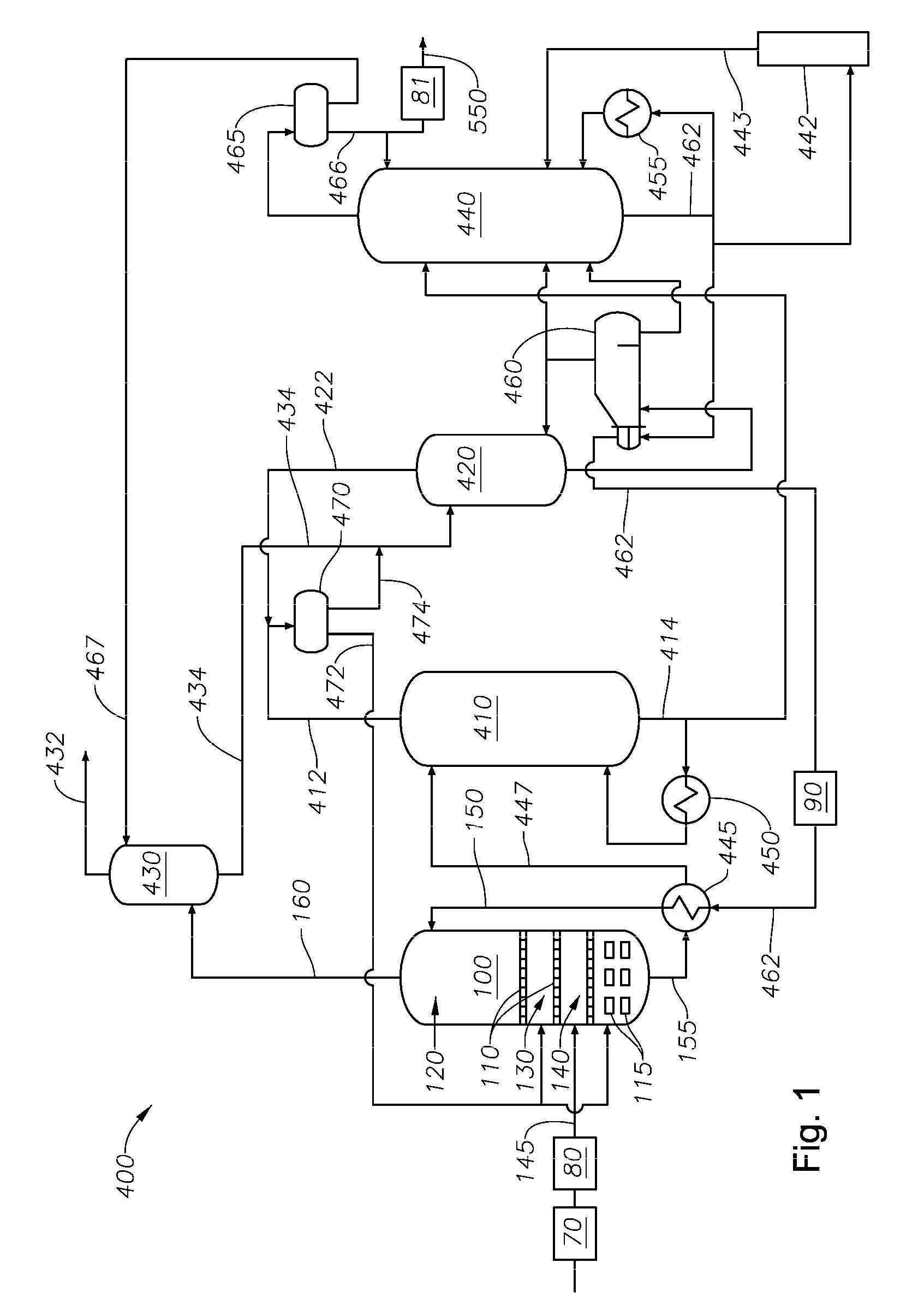Solvent Quality Control in Extraction Processes
a technology of solvent quality control and extraction process, which is applied in the direction of hydrocarbon distillation control/regulation, separation process, multi-stage water/sewage treatment, etc., can solve the problems of light impurities having a tendency to build up in the system, decreasing the capacity of the extraction process, etc., to maintain long-term solvent stability and quality, and improve quality and long-term reliability
- Summary
- Abstract
- Description
- Claims
- Application Information
AI Technical Summary
Benefits of technology
Problems solved by technology
Method used
Image
Examples
Embodiment Construction
[0018]The invention concerns an improvement in the long term reliability of solvent systems used in liquid-liquid extraction (LLE) or extractive distillation (ED) techniques, and combinations thereof, for the separation of aromatic hydrocarbons from non-aromatic hydrocarbons.
[0019]In embodiments, the amount of free, molecular oxygen (O2) in the feed is kept below 0.1 vppm (per liter solvent), preferably less than 0.02 vppm, and the amount of organic chlorides in the feed is kept below 0.1 wppm (per kilogram solvent), as chloride. Organic chloride (or organo chloride) as used herein means a hydrocarbon species having a chloride directly bonded to carbon, for example propylchloride or butylchloride. The hydrocarbon species may contain other heteroatoms, e.g., oxygen, nitrogen, and the like.
[0020]In embodiments, the amount of free, molecular oxygen in the equipment vapor phase of the LLE or ED system is less than 500 wppm prior to inventorying the unit and preparing for start-up.
[0021]...
PUM
| Property | Measurement | Unit |
|---|---|---|
| diameter | aaaaa | aaaaa |
| diameter | aaaaa | aaaaa |
| boiling point | aaaaa | aaaaa |
Abstract
Description
Claims
Application Information
 Login to View More
Login to View More - R&D
- Intellectual Property
- Life Sciences
- Materials
- Tech Scout
- Unparalleled Data Quality
- Higher Quality Content
- 60% Fewer Hallucinations
Browse by: Latest US Patents, China's latest patents, Technical Efficacy Thesaurus, Application Domain, Technology Topic, Popular Technical Reports.
© 2025 PatSnap. All rights reserved.Legal|Privacy policy|Modern Slavery Act Transparency Statement|Sitemap|About US| Contact US: help@patsnap.com



